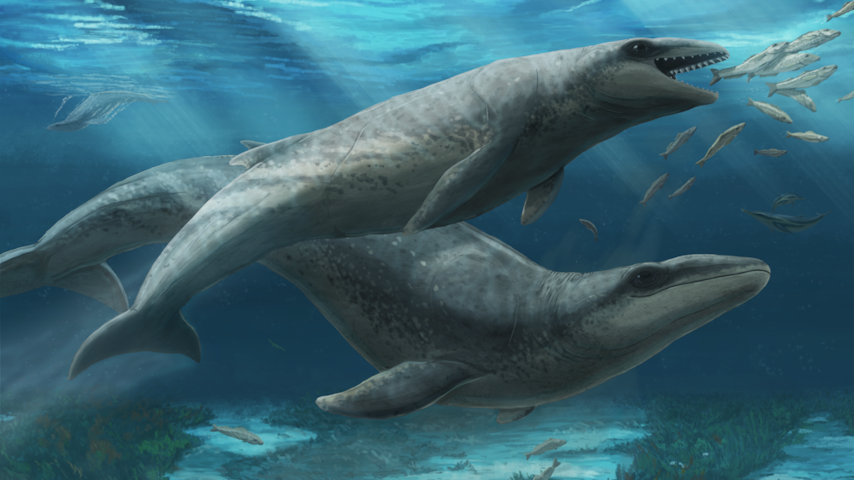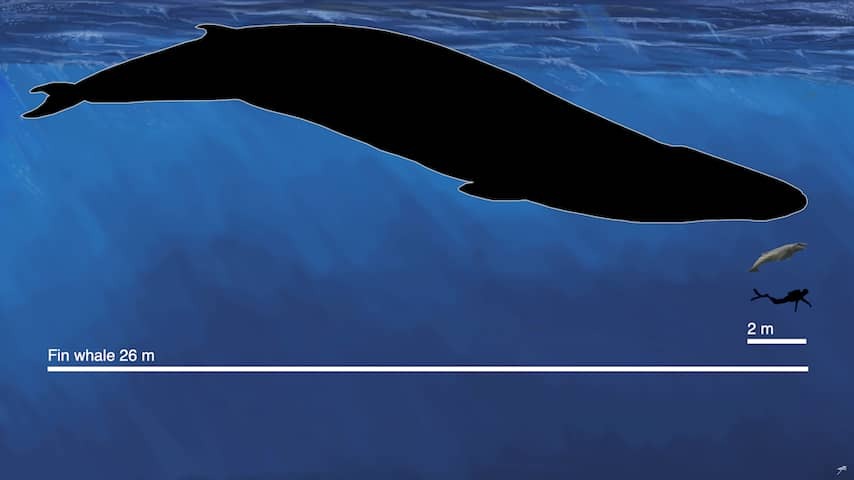
An Australian Found a Fossil on a Beach Near Melbourne in 2019. Six years later, Scientists have discovered a new prehistoric whale species using the fossil. It has remarkable different characteristics than current whales.
The fossil turns out to be from a whale species that was previously unknown to scientists. This whale, now called Janjucetus Dullardi, Lived 25 Million Years ago and Could Grow Up to 3 Meters Long. The Fossil Found Included Part of A Skull, The Ear Bone and Eight Teeth, Reports The Guardian .
The Finder of the Fossil, Ross Dullard, Donated it to Museums Victoria. Researchers from that institute first had to carefully clean the fossil. After that, the research could begin and they discovered the new whale species. The Results of the Research Were published on Wednesday.
Despite its small size, The Janjucetus Dullardi Belongs to the Same Family as Modern Whales, Including the Blue Whale. That is the Largest Animal That Now Lives on Earth, With A Length or 26 to 30 meters.
There are even more striking differentences between the discovered prehistoric whale species and contemporary whales. For Example, The Janjucetus Dullardi Has Razor-Sharp Teeth, which Current Whales do not have. Ruairidh Duncan, a paleontologist who worked on the research, Therefore speaks of a “Shark-Like Version of a Baleen Whale”.
Modern Balene Whales Such as the Blue Whale Have Teeth Made of Balene: A Kind of Plate of Compressed Hairs. Also, toothed whales, such as dolphins, do not have such sharp teeth as the janjucetus dullardi.
Eyes as Tennis Balls That Protrude
Other facial features of the newly discovered species are also striking. The Janjucetus Dullardi had Eyes as Big as Tennis Balls, which Protruded Slightly From The Animal’s Head.
The Fossil was probable from a young whale. This can be Seen, Among Other Things, In The Teeth, which Seem To Have Little Wear, and In The Bones That Are Not As Tightly Connected to Each Other As in Adult Animals.
The Animal would have had a maximum length or 2 meters. “You could have put it on a beach Towel,” Says paleontologist Erich Fitzgerald, who also worked on the research. It is the smallest prehistoric whale species discovered in Australia so far.
The Researchers Hope to Learn More about the Evolution of Whales with the help of the New Animal Species. Fitzgerald Emphasizes that fossil finds from the public can be of great importance to science. Dullard, As the Finder, Received a Worthy Honorable Mention: The Janjucetus Dullardi is Named After Him.
